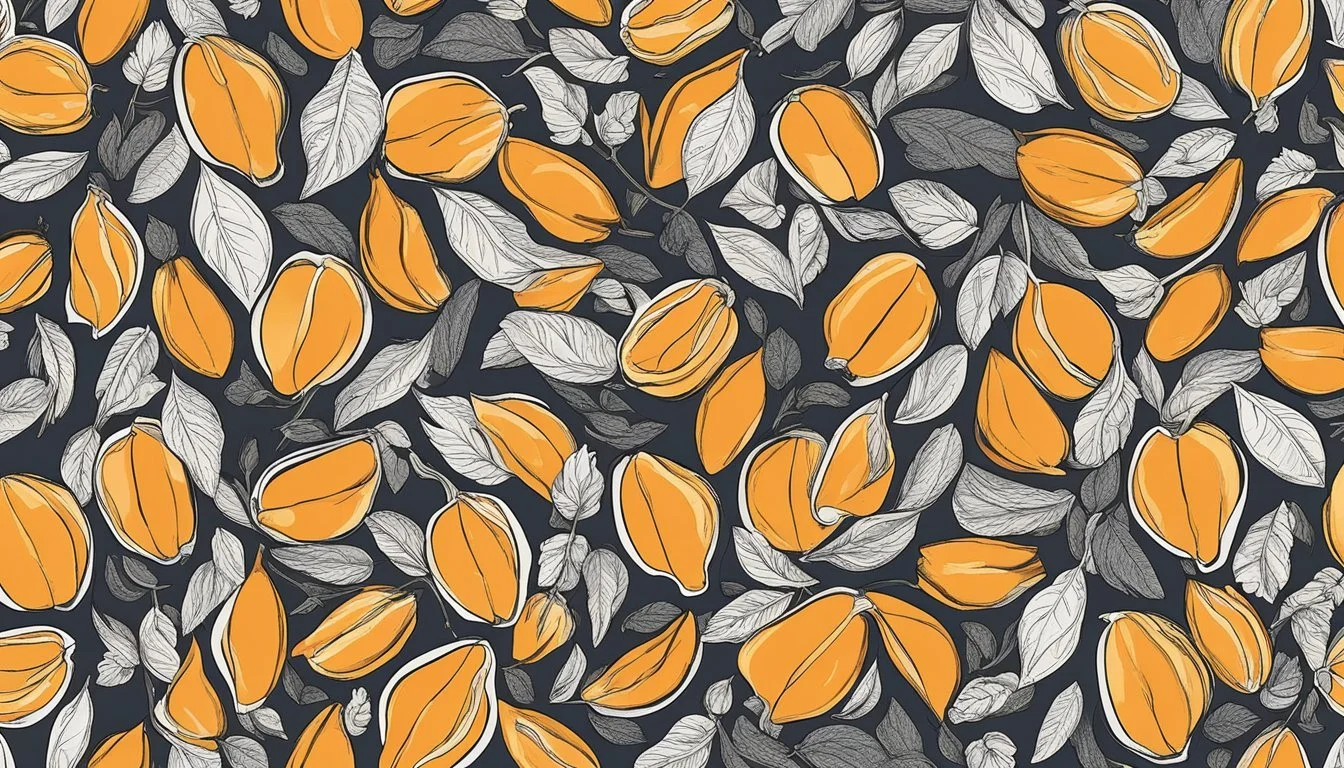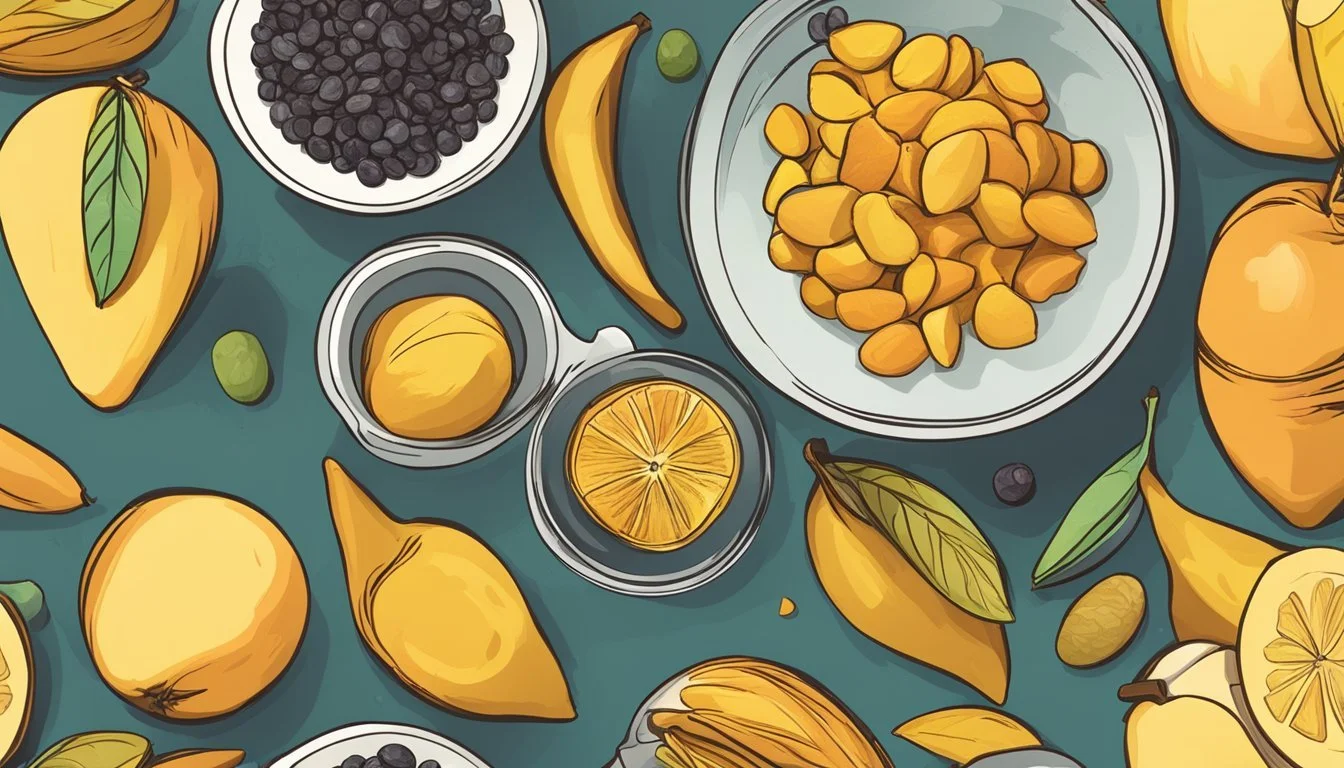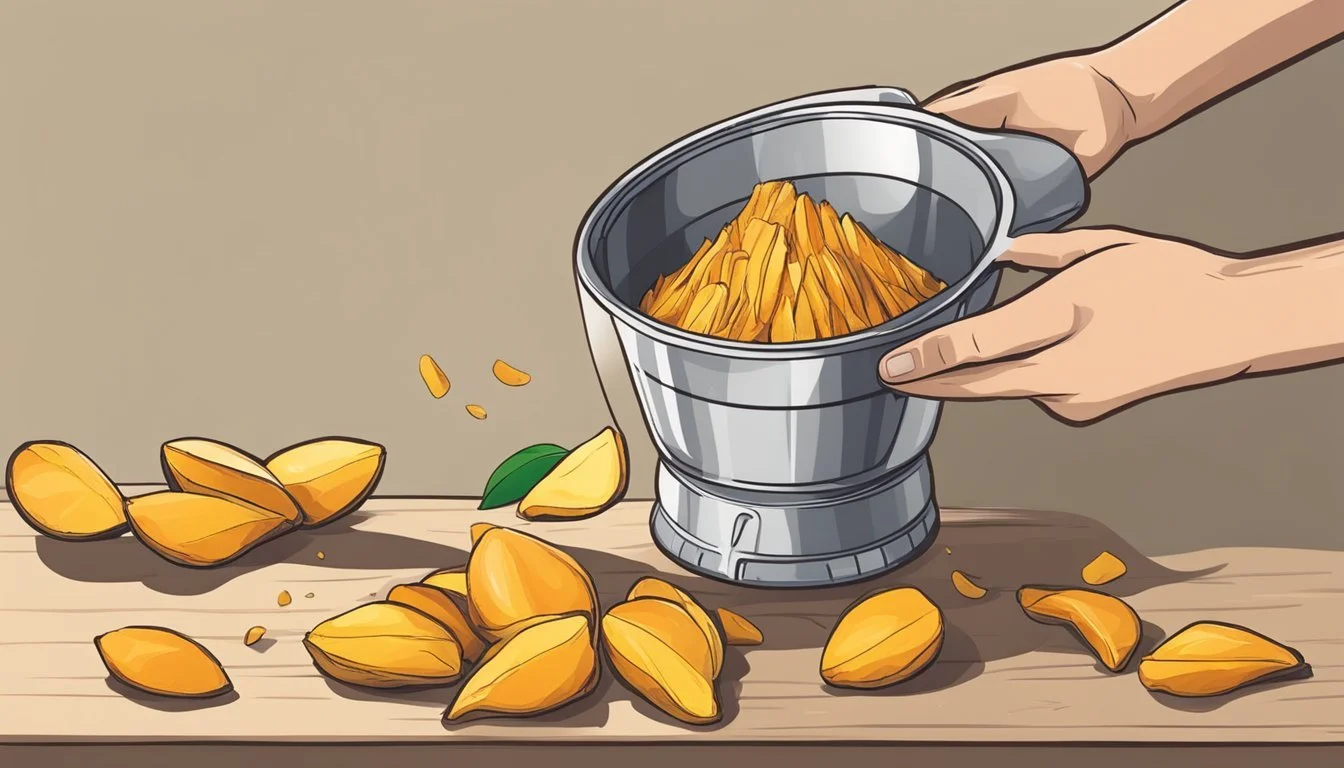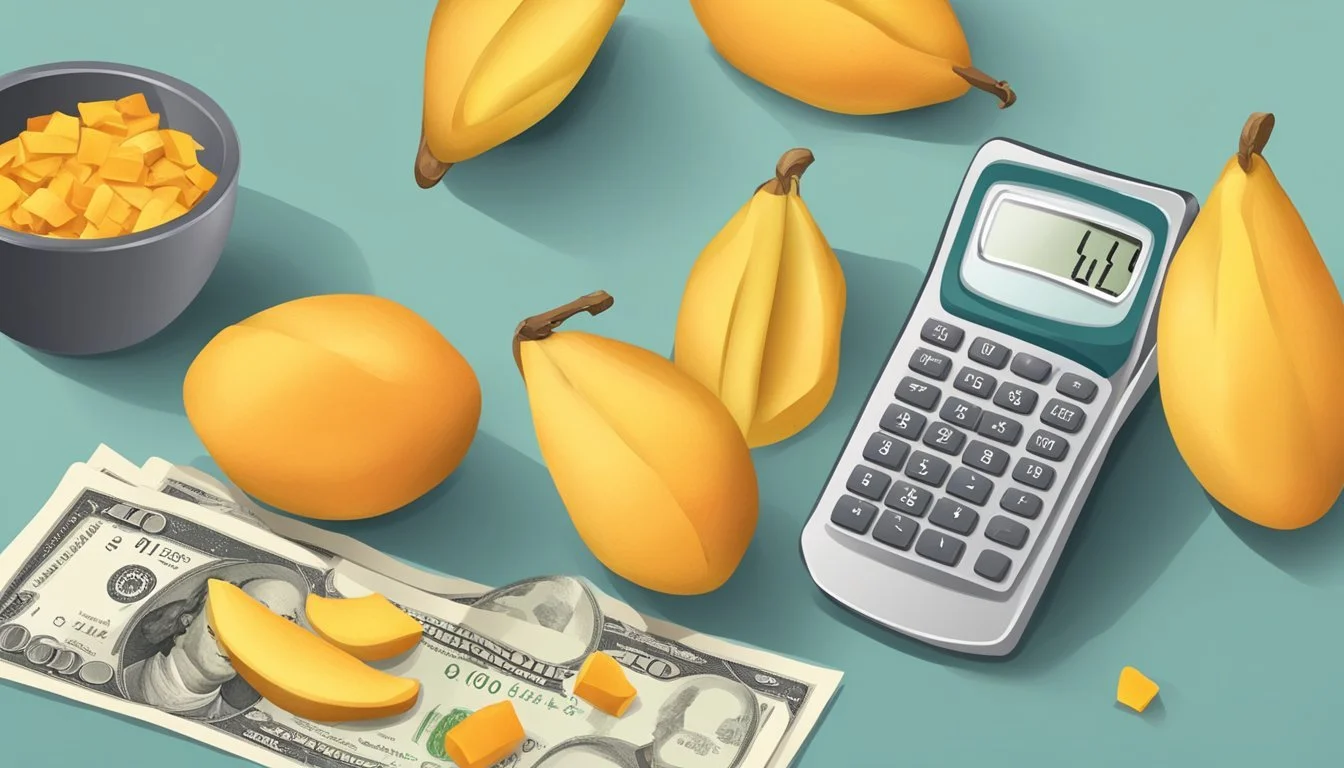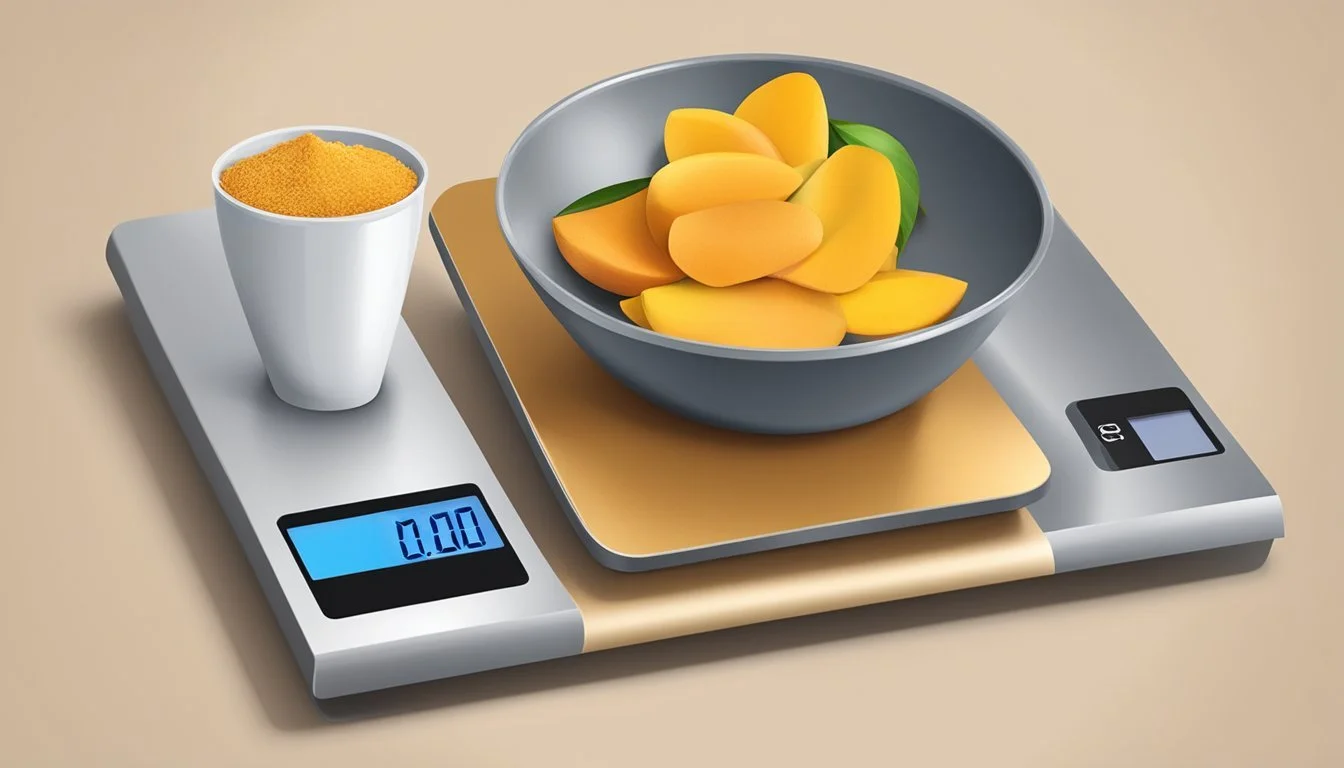How Many Cups in a Pound of Dried Mango?
Measuring Your Snacks Accurately
Determining the conversion of dried mango from weight to volume is essential for both home cooks and professional chefs who need precision in their recipes. When cooking or baking, ingredients ratios can make or break the final product. Dried mango is often used in various culinary applications and understanding how to properly measure it can be crucial.
A pound of dried mango corresponds approximately to 2.8 cups. This estimate is based on the density of dried mangoes which weighs about 107 grams per metric cup. Measuring by weight is typically more accurate than measuring by volume due to the variability in size and compactness of the dried fruit.
This conversion is particularly useful when adjusting recipes or purchasing the correct amount of dried mango needed. Since most packaged dried fruits (What wine goes well with dried fruits?), including mangoes, come with weight labels and recipes often call for volumetric measurements, having this conversion at hand streamlines the process and helps ensure consistency in the results.
Understanding Weights and Measures
When converting between weight and volume for dried mango, it is critical to utilize the correct units of measure to ensure accuracy in recipes or dietary planning.
Weight Units
Weight is a measure of how heavy an object is. The most commonly used weight units in cooking are grams (g), ounces (oz), and pounds (lb). One pound is equivalent to 16 ounces or about 454 grams. Precise weight measurement is integral for replicating recipes and for nutritional calculations.
Grams: A gram is a metric unit of weight equal to one-thousandth of a kilogram.
Ounces: An ounce is an imperial unit of weight. There are 28.35 grams in one ounce.
Pounds: A pound is an imperial unit of weight. One pound equals 16 ounces or 453.592 grams.
Volume Units
Volume is the amount of space an ingredient occupies. Common volume units in the kitchen include cups, milliliters (ml), and quarts. A standard US cup, which is used for both liquids and solids like dried fruits, measures approximately 237 ml. One quart is equivalent to four cups.
Cups: A cup is a unit of volume commonly used in cooking to measure both liquids and solids.
Milliliters: A milliliter is a metric unit of volume equal to one-thousandth of a liter, often used for small quantities.
Quarts: A quart is an imperial unit of volume equal to four cups or two pints.
Dried Mango Specifics
When dealing with dried mango, it's crucial to understand its characteristics and how these affect the conversion from weight to volume, which is essential for accurate measurements in cooking and baking.
Characteristics of Dried Mango
Dried mango typically undergoes a dehydration process that removes most of the moisture content, resulting in a smaller, denser fruit. The final product is a chewy and sweet snack, varying in size, shape, and density depending on the variety and ripeness of the mango before drying, as well as whether it was peeled or not. Generally, dried mango comes in slices or pieces, and like other dried fruits, its reduced water content concentrates both the flavor and the sugar.
Converting Weight to Volume for Dried Mango
To convert the weight of dried mango to volume, one can refer to specific conversion metrics. For instance, 107 grams or approximately 3.6 ounces of dried mango are known to fill 1 US cup. This conversion is dependent on the density of the dried mango, which can vary:
Weight Volume 107 g 1 metric cup 3.6 oz 1 US cup
Keep in mind that variations in cutting styles and dehydration methods can affect density and, consequently, these conversion factors.
Nutritional Information
In considering the nutritional content of dried mango, one must take into account its calorie density and macronutrient balance. This fruit is rich in essential nutrients and carbohydrates, facilitating a concentrated energy source.
Health Benefits
Calories: Dried mango is calorically dense due to the removal of water during the drying process.
Serving Size Calories 1/4 cup (40g) 128 100 grams 314 1 cup 317
Carbohydrates: As a predominant macronutrient in dried mango, carbohydrates provide the body with quick energy. Each serving includes a significant amount of sugars, which accounts for the majority of its carbohydrate content.
Protein and Fat: While not a significant source of protein or fat, each serving of dried mango provides a minor amount of both. Typically, there is around 2% protein and 2% fat in the composition, which plays a lesser role in its nutritional profile.
- Protein: Approximately 2% of serving size
- Fat: Roughly 2% of serving sizeFiber: Dried mango does contain some dietary fiber, which is beneficial for digestive health, though its content is less compared to that of fresh mango due to the concentration of sugars.
Sugars: With a high concentration of natural sugars, dried mango is quite sweet and should be consumed in moderation. In particular, unsweetened dried mango contains around 27 grams of sugar per 1/4 cup serving.
Vitamins and Minerals: It is a good source of Vitamin A, contributing to immune function and eye health. Despite the drying process, vitamin A is retained to a large extent.
Micronutrients: Dried mango can provide various micronutrients such as folate and copper. These nutrients support bodily functions, including metabolic processes and maintenance of healthy blood vessels.
Dried mango is a nutritious snack option, offering a concentrated source of energy and micronutrients beneficial for overall health. However, due to its high sugar content, portion control is recommended.
Culinary Uses of Dried Mango
In the culinary sphere, dried mango serves as a versatile ingredient that can enhance a variety of recipes. It injects a touch of tropical fruit flavor into dishes, ranging from simple snacks to complex desserts.
Desserts and Recipes
Dried mangoes can be a game-changer in desserts. Their concentrated sweetness and tangy flavor complement many recipes. Chefs often use them to infuse a tropical essence into traditional baking items or to create bold, new concoctions.
Cookies: A dash of dried mango pieces added to cookie dough lends a chewy texture and a punch of fruity flavor.
Cakes and Muffins: Pureed dried mango can be blended into batter to moisten and flavor cakes and muffins.
Smoothies: Blending dried mango with yogurt or milk creates a thick, nutritious smoothie.
Chutneys: Simmering dried mango with vinegar, sugar, and spices yields a chutney that elevates grilled meats or curry dishes.
Desserts often benefit from the concentrated taste of dried mangoes, allowing bakers to use less sugar. It's important to note that dried mangoes should be chopped or pureed according to the recipe's requirements to ensure an even distribution of flavor.
Conversion References
In order to provide precise measurements for dried mangoes, conversion references are essential. They help cooks ensure that they are using the right amount of ingredients whether they are preparing meals at home or in a professional setting. These standards bridge the gap between different measurement systems and cater to a variety of serving sizes.
Home Cooking Measurements
For home cooks, understanding the conversion between weight and volume is crucial for accuracy in recipes. The most common volume measurements used at home are the US cup, tablespoon, and teaspoon. According to the search results, 107 grams of dried mango equals 1 metric cup or 3.6 ounces per US cup. Since there are approximately 28.35 grams in 1 ounce, one can deduce that a US cup of dried mango weighs around 102 grams (3.6 oz * 28.35 g).
1 US cup of dried mango = ~102 grams
1 US tablespoon of dried mango = ~6.4 grams (1/16 of a cup)
1 US teaspoon of dried mango = ~2.13 grams (1/3 of a tablespoon)
Using these conversions, home cooks can easily translate weight to volume measurements and vice versa for accurate ingredient portions.
Professional Kitchen Standards
Professional kitchens often use more precise measurements to maintain consistency in recipe outcomes. These measurements may include metric cups and spoons. The metric system is more common globally and thus might be used in professional recipes and cookbooks. Additionally, professional chefs tend to rely on scales for measuring ingredients by weight to ensure exactness, especially for bulk or large-scale cooking.
1 metric cup of dried mango = 107 grams
1 metric tablespoon of dried mango = 6.69 grams (1/16 of a cup)
1 metric teaspoon of dried mango = 2.23 grams (1/3 of a tablespoon)
Chefs and professional cooks usually prefer weights to volumes for dry ingredients like dried mango to account for variables such as chopping size or air content, which can affect the accuracy of volume measurements.
Food Preservation and Processing
In the context of transforming fresh mangoes into a long-lasting form, processing, specifically drying, and the use of preservatives play crucial roles in determining the shelf life and quality of the final product.
Effects of Drying on Mangoes
When mangoes are processed using a dehydrator, the removal of moisture inhibits the growth of microorganisms that cause spoilage. Drying ripe mangoes extends their shelf life significantly, often allowing them to be safely consumed for up to a year or more. The drying process involves cutting the mangoes into slices and subjecting them to temperatures that are sufficient to extract moisture yet low enough to minimize any loss of nutritive value. Ideally, this method preserves the essential vitamin content and flavor of fresh mangoes.
Preservative Use in Dried Mangoes
The addition of preservatives is a common practice to further extend the shelf life of dried mangoes. These substances help to prevent oxidation and microbial growth. In some cases, a light dusting of powdered sugar is used in packing dried mangoes to prevent sticking. This can also act as a mild preservative by creating an environment less conducive to microbial proliferation. Additionally, for those storing dried mangoes in jars, the practice of including an oxygen absorber is crucial in ensuring the absence of oxygen, which can lead to spoilage.
Comparison with Other Fruits
In assessing the weight to volume relationship of dried mango, it's insightful to consider how it aligns with other fruits. This serves both practical cooking applications and nutritional evaluations.
Weight to Volume Across Fruits
A pound of dried mango typically equates to about 4 cups of prepared fruit. This conversion can vary significantly among different types of fruit due to their unique densities and water content when dried. Here is a comparison of dried mango with other common fruits:
Berries: 1 pound of berries usually equals approximately 3 to 3.5 cups.
Strawberries: A quart of strawberries, which weighs about 1.5 pounds, converts to roughly 4 cups when sliced.
Apples: A pound of apples is about 3 cups when sliced.
Bananas: For bananas, 1 pound equates to 1.75 cups when mashed.
Dates: In the case of dates, 1 pound typically equals 2.5 to 3 cups.
Lemon: The juice of one medium lemon offers about 2 to 3 tablespoons.
Orange: 1 pound of oranges can yield approximately 1 cup of juice.
Pears: Pears and dried mango share a close weight to volume ratio; a pound of pears provides around 3 to 4 cups when chopped.
When comparing dried mango to fresh fruit, the former is denser and has a more concentrated flavor and sugar content due to the removal of water during the drying process. In contrast, fresh fruits contain more volume and water, leading to a different weight to volume ratio. For example, a cup of fresh fruit like oranges or strawberries will weigh less than a cup of their dried counterparts. This is important to remember when substituting fresh for dried fruits or vice versa in recipes, as the volume and weight can differ greatly.
Buying Dried Mango
When selecting dried mango, consumers should focus on quality, which often relates to the texture, flavor, and additional ingredients, as well as the pricing, which can vary depending on the type and brand of product.
Determining Quality and Pricing
Quality is paramount when purchasing dried mango. Buyers should look for texture and flavor as prime indicators of a superior product. High-quality dried mangoes typically have a chewy texture without being too leathery and possess a rich, sweet mango flavor that is indicative of proper drying at peak ripeness.
Type:
Sweetened Dried Mango: Coated with sugar, often chewier and sweeter.
Unsweetened Dried Mango: No added sugar, offering natural sweetness of mango.
Regarding edible quality, brands that do not add sugar provide a healthier option, retaining the fruit's natural sweetness. However, for those who prefer an intense flavor or a candy-like taste, sweetened options are available.
Serving Size: A typical serving size for dried mango is about 1/4 cup or 40 grams. It is crucial to read packaging labels to understand serving sizes and related caloric intake.
Price is influenced by several factors, including brand, type (organic, sweetened, unsweetened, etc.), and whether the product is sold in bulk. In general, organic and unsweetened varieties tend to be priced higher. Consumers should compare prices among different brands and consider purchasing in bulk for savings, especially if dried mango is a frequent snack.
To make an informed buying decision, shoppers should:
Check the label for the presence of added sugars or preservatives.
Be aware of the pricing per weight or volume to understand the cost-effectiveness.
Choose the type that best fits their dietary preferences and needs, whether it's for direct consumption or as part of recipes.
By considering these points, consumers can purchase the dried mango that most suitably aligns with their taste preferences and budget.
Food Data and Calculations
The precise measurement of food items, like dried mango, is essential for culinary accuracy and nutritional tracking. This section dives into the utilization of food databases and the processes involved in engaging in accurate food calculations.
Utilizing Food Databases
Food databases are comprehensive resources that collect and catalog information on various foods, including branded foods. They provide details on food weight, volume, and density, which are crucial for converting measurements. A user might leverage a food database to find the density of dried mango, which is necessary to convert a given weight to volume. For instance, such a database may specify that 1 US cup of dried mango weighs approximately 3.6 ounces.
Engaging in Food Calculations
Once the food density is known, individuals can engage in food calculations to determine the number of cups in a pound of dried mango. They may visit a food calculations forum for assistance or use online tools provided by food databases. To illustrate, the calculation would be as follows, assuming the density is constant:
Weight Density (ounces per cup) Volume (cups) 1 lb 3.6 oz ~4.44 cups
Multiplying the weight of the dried mango in pounds by 16 (the number of ounces in a pound) and dividing by the density gives the volume in cups. Here, food calculations are crucial to ensuring that the conversion from weight to volume is accurate.
Advanced Measurement Concepts
In the context of translating units between cups and pounds, specifically for dried mango, it is crucial to comprehend the scientific principles that underpin the conversion process. Precise measurements are key in culinary and scientific contexts, ensuring consistency and reproducibility.
Scientific Measurement Units and Concepts
Scientific measurement units are fundamental in the world of science, providing a universal language for researchers and professionals. When measuring dried mango, the units typically involved are grams and kilograms, which are standard units of mass in the International System of Units (SI). The concept of mass is central to this conversion, as it relates to the amount of matter in an object, with dried mango being the object of interest.
Converting cups, which is a volumetric unit, to pounds or kilograms requires an understanding of the specific gravity (or density) of dried mango. Specific gravity is a dimensionless quantity that compares the density of a substance with the density of water at the same temperature. Knowing this allows one to convert from volume to mass, which is essential for accurate conversions between cups and pounds.
When dealing with mass and weight on a molecular level, the mole becomes relevant as a unit. It represents the quantity of substance containing as many elemental entities as there are atoms in 12 grams of pure carbon-12. While this concept might not directly apply to macroscopic conversions of dried mango, it is fundamental in chemical stoichiometry, should the conversion take place in molar quantities for a chemical analysis of the mango.
Molar concentration, denoted by the unit mole per liter (mol/L), is a measure of the concentration of a solute in a solution, or of any chemical species, in terms of amount of substance in a given volume. It's not typically used in culinary conversions but is a cornerstone for any solution-based analysis in food chemistry.
Table 1: Basic Conversion Factors
Unit Relation to Other Units Gram (g) 1,000 grams = 1 kilogram (kg) Kilogram (kg) 1 kg = 2.20462 pounds (lbs) Mole (mol) Avogadro's number of particles Specific Gravity Ratio of substance density to water density
The conversion between cups and pounds of dried mango, hence, rests on these scientific concepts, allowing for precise and reliable measurement across different disciplines.




